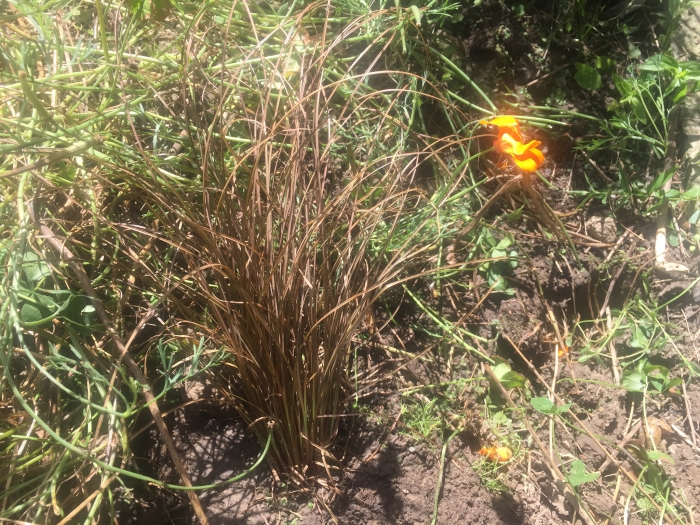Weeping Brown Sedge
(Carex flagellifera)
Weeping Brown Sedge (Carex flagellifera)
/
/

John Flower
CC BY 4.0
Image By:
John Flower
Recorded By:
Copyright:
CC BY 4.0
Copyright Notice:
Photo by: John Flower | License Type: CC BY 4.0 | License URL: http://creativecommons.org/licenses/by/4.0/ | Rights Holder: John Flower | Publisher: iNaturalist | Date Created: 2017-01-08T01:18:03Z |





















Estimated Native Range
Summary
Carex flagellifera, commonly known as weeping brown sedge or Glen Murray tussock sedge, is a perennial herbaceous plant in the Cyperaceae family. It is native to the grasslands and open forests of Tasmania, New Zealand, and the Chatham Islands, where it thrives in moist, well-drained soils. This sedge typically grows to a height and width of 1-2 feet, forming dense clumps of fine, arching foliage. The leaves are often a distinctive bronze-brown color, which adds a unique textural and color contrast in garden settings. The inflorescences are subtle and not particularly showy, but they do contribute to the plant’s overall texture.
Weeping brown sedge is valued for its graceful, weeping habit and its ability to provide year-round interest in the garden. It is used in a variety of settings, including rain gardens, borders, and as a ground cover. The plant is also suitable for container gardening and can be used to stabilize soil in erosion-prone areas. It prefers full sun to part shade and requires consistent moisture, making it ideal for wetter garden spots. The cultivars ’Auburn Cascade’, ’Coca-Cola’, ’Frosted Curls’, ’Kiwi’, ’Rapunzel’, and ’Toffee Twist’ offer variations in foliage color and form, enhancing its ornamental appeal. While generally low-maintenance, it can be susceptible to rust and root rot if conditions are too wet.CC BY-SA 4.0
Weeping brown sedge is valued for its graceful, weeping habit and its ability to provide year-round interest in the garden. It is used in a variety of settings, including rain gardens, borders, and as a ground cover. The plant is also suitable for container gardening and can be used to stabilize soil in erosion-prone areas. It prefers full sun to part shade and requires consistent moisture, making it ideal for wetter garden spots. The cultivars ’Auburn Cascade’, ’Coca-Cola’, ’Frosted Curls’, ’Kiwi’, ’Rapunzel’, and ’Toffee Twist’ offer variations in foliage color and form, enhancing its ornamental appeal. While generally low-maintenance, it can be susceptible to rust and root rot if conditions are too wet.CC BY-SA 4.0
Plant Description
- Plant Type: Grass
- Height: 1-2 feet
- Width: 1-2 feet
- Growth Rate: Moderate
- Flower Color: N/A
- Flowering Season: Summer
- Leaf Retention: Evergreen
Growth Requirements
- Sun: Full Sun, Part Shade
- Water: High
- Drainage: Medium
Common Uses
Bird Garden, Border Plant, Deer Resistant, Groundcover, Low Maintenance, Potted Plant, Rock Garden, Street Planting
Natural Habitat
Native to the grasslands and open forests of Tasmania, New Zealand, and the Chatham Islands
Other Names
Common Names: Trip-Me-Up , Glen Murray Tussock , Mophead Sedge , Trip Me Up
Scientific Names: Carex flagellifera , Carex lucida , Carex pulla
GBIF Accepted Name: Carex flagellifera Colenso